The Real Market With Chris Rising – Ep. 15 Brendan Wallace
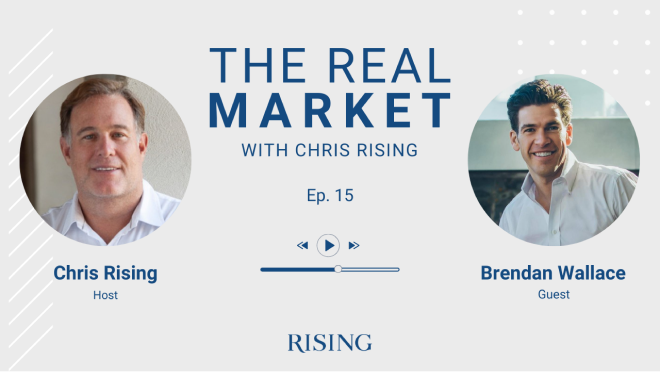
The Real Market With Chris Rising – Ep. 15 Brendan Wallace
Podcast: Play in new window | Download
0:01:14 CR: Welcome to The Real Market. I’m excited to have with me today Brendan Wallace of Fifth Wall Ventures. Brendan and I have gotten to know each other over the last year or so as we interact in real estate panels and around technology that we find exciting and interesting for real estate development. So, Brendan, welcome to the podcast, to The Real Market.
0:01:35 Brendan Wallace: Yeah. Thank you for having me on. I’m really excited. I’ve listened to a couple episodes previously, and I just love the fact that so many real estate owners are contributing to this thought leadership around technology and innovation. So really excited to be a part of it.
0:01:50 CR: Well, I appreciate it, and I know you all are masters, at least from my end of it, on how you do your marketing and your email that comes out every two weeks, and your… And I know you do a podcast as well. So I’m the one, I feel very lucky to have you on the podcast.
0:02:08 BW: Well, thrilled to…
0:02:10 CR: Well, good. So why don’t you tell… I think a lot of people who have any tech savvy within real estate know who you are and your partner, Brad, and know Fifth Wall, but maybe you could give us a little background on the company and on yourselves, and maybe start that way.
0:02:28 BW: Yeah. So Brad and I have pretty analogous backgrounds, which is we’re both kinda hybrids of experience in the real estate industry as well as experience in tech. So my background is, right after Princeton, I worked at Goldman Sachs doing real estate investment banking and then I worked at Blackstone in real estate private equity, and then 2008 hit. So it seemed like a good time to go to business school. So I went to business school at Stanford and I started my first tech company as a student at Stanford, just being in that kind of tech, Silicon Valley, venture ecosystem. It grew really quickly. It was a data and analytics business. We raised about $35 million and sold to Workday in 2014.
0:03:13 CR: Wow. Did you create some IP around that that made that special, or did you create more of a platform?
0:03:20 BW: It was really a platform that enabled recruiters, mainly those targeting blue collar and semi skilled workers to leverage Facebook as a recruiting solution, very much like how white collar recruiters leverage LinkedIn. So it’s a pretty powerful platform that enabled McDonald’s and FedEx and large blue collar hirers to recruit and target potential candidates for jobs on Facebook. So the impact was really interesting from an employment perspective. So I had had these kinda two hybrid experiences. I worked in real estate and worked in tech, and Brad Greiwe, my co-founder, he had a very similar background. He was Harvard undergrad, worked at UBS in real estate investment banking, worked at Tishman Speyer in real estate, worked at Starwood real estate private equity, and then he left Starwood to co-found a company called Invitation Homes, which was originally a platform to programmatically buy single family homes during the bottom of the housing crisis using automatic valuation models and spotting big spreads and ARVs where you could acquire these homes very cheaply and rent them out.
0:04:33 BW: Blackstone found the company, acquired it, and ultimately invested $4 billion buying homes through it. I think today they have 70,000 single family homes for rent in the US. It’s the largest single family rental company. I think what was interesting was Brad was the CTO there, so he had to really build and develop ground up through IP around how do you manage 70,000 individual, idiosyncratic homes across the country in the same way that you would manage a multi-family platform? So he had really been on the frontlines of this convergence of real estate and tech. I think part of that, Chris, is because Invitation Homes is probably one of the first examples of a company where it’s a real estate business at its core, but technology was existential to the creation of it. It wasn’t just helpful or it helped it save a little bit of money. You literally could not have built the business without a technology backbone and Brad really pioneered that.
0:05:37 CR: Yeah. To that point. I mean I think that… I agree exactly and I kinda heard the story around this, but I wanna make sure that our listeners understand that when you’re putting together thousands of homes, that’s not the same thing as buying, say, an apartment complex that has a hundred units where the units are all pretty much either one bedrooms or two bedrooms. They all have the same kind of structure inside in terms of risers and all that. You’re putting together 10,000, 20,000 homes that are all very different, very different sizes and technology was the part that was the key. That’s how you went… You couldn’t do that from an Excel spreadsheet the way… It needed a software. I’ve heard this described to me. I have a friend in YPO who put together about 2,000 homes in the Atlanta area, which he sold, and he said it wasn’t till they got to the technology factor that the business actually worked. That’s a great example about the impact of technology in a business that really couldn’t have existed without technology.
0:06:41 BW: I think it’s part of a broader trend, Chris, of how technology and real estate are converging not just around real estate operations, but around real estate capital markets, and what I mean by that are situations where technology is actually core, and as I said before, existential to the creation of a new asset class. When you think about, for example, the emergence of the data center industry as its own stand alone, real estate asset class, that is obviously totally derivative of the growth of the internet. And correspondingly, I think you can look at Invitation Homes as another example, where technology was core to the creation of the single-family rental asset class. Today, I think as you look pro forma and look at short-term rentals, what’s happening on Airbnb and many of these companies that are rolling up single-family rental platforms, that is really a real estate business at its core for which technology is existential and we think about co-living and co-working and on-demand self-storage, and I see a lot of these opportunities going forward. So it’s something that really excites us as investors.
0:07:58 CR: Well, how did you go from starting businesses and doing the startup thing out of Stanford and then transitioning to the company that you and Brad are now building?
0:08:10 BW: Back in 2016, when we first had the idea for Fifth Wall, what we saw was a handful of opportunities that no one had really connected the dots on. So on the one hand, there was just massive secular growth of real estate technology companies, the VTSs of the world that have built really elegant technology solutions that serve the real estate industry, depended on real estate distribution, and were growing very fast. Those companies wanted access to large real estate owners and on the other side of the equation, we saw large real estate owners who are increasingly focused on technology, which was a change because the real estate industry has historically been one of the lowest spenders on IT. REITs didn’t have chief information officers until five years ago. Many of them just did not have a point of view on technology, but we saw that changing.
0:09:09 BW: We saw CIOs being hired, we saw real IT budgets being formed, and we even saw the emergence of almost like a cottage industry of venture investing from these large real estate corporates in the technologies they were adopting, kind of playing kingmaker, so to speak, for these young companies. But as you can imagine, real estate owners are not the best venture investors. It’s a very different type of investing. Buying a building, which is a stable cash flow-producing, income-producing asset that has tangible value and investing in an IP-driven, typically cash flow-negative startup are just very different things. So what we saw was an opportunity to function as a adviser to the large real estate strategics that were looking to technology solutions to support their business, and in helping them find those solutions, we would also identify great companies that we could invest in with a pool of capital. So what we did in early 2016 was we raised capital from large US owner operators across different asset classes, and so we raised… It was a total of $212 million in the first fund from CBRE in brokerage, Prologis in industrial, Lennar in home building, Equity Residential in multifamily, Hines in office, Host Hotels in hospitality, and Macerich in retail. That was really where it all started.
0:10:45 CR: And how did you, when you started this, having tried to raise and raised a lot of money in my career, one of the first things people ask is, what’s your pipeline? How are you gonna get this money out? How did you look at that when you started your firm in, was it 2016, to be able to give people confidence, that if they committed a certain amount of capital you were gonna be able to have quality deals so you could invest that capital?
0:11:13 BW: One of the pain points that we saw was that in the venture capital ecosystem, there was a white space. There was no kind of real estate technology, construction technology-focused venture capital fund this size. There are other sector-focused funds, focused on education or agriculture, but nothing in real estate tech. So what you heard from entrepreneurs that we were talking to, because Brad and I were actively angel investing, even before we started Fifth Wall, in real estate tech companies, was that entrepreneurs wanted a platform that could put them in front of the largest owner operators in the US, and the generalist VCs who typically invest in series A or series B companies, didn’t have those connections. They didn’t have that expertise, they just didn’t have those relationships. So what we saw was this opportunity to say one, by advising these large real estate corporates on what technologies they should adopt, we can also provide an avenue for young emerging companies to access the largest owners on earth and have a conversation, and that was quite powerful.
0:12:22 BW: The other dynamic Chris is that, when you’re structuring a big commercial partnership between one of our corporates and a young technology company, it gives you pretty powerful information about future growth. We’re able to underwrite growth vis-a-vis our strategic partners, and our portfolio companies, that it would be hard for a firm that wasn’t advising large real estate corporates to do. So that was how we pitched it in the early days.
0:12:54 CR: Did you come with an investment or two in your pocket saying, “Here’s the first deal folks.” Or how did you do that?
0:13:01 BW: We actually didn’t. We kinda said, “Look, the aim is for us not to throw things at you, because the core of our business is, we function really as strategic advisors to our large real estate LP’s.” So what we wanted to do is before we even form the thesis, we wanted to say, “Let’s first listen to you. Let’s listen to what you tell us your pain points are. Where you’re looking for a solution where today you don’t have one and then based on those pain points, let’s go out, analyze the market, distill down a set of potential partners for you and then pursue investments in them.” So you can almost think about it as a top down approach to venture investing where we’re starting with the pain points of these large real estate corporates, understanding how they would evaluate success, who the stakeholders are, how they run pilots. Then based on that, we refine that into an investment strategy that’s tailored to meet their needs.
0:14:07 BW: So it’s less of the kind of, “Hey, we think this is interesting, you should adopt it”. Because we had seen that model in real estate tech before, and the feedback from large real estate organizations was that they don’t need more companies being thrown at them. If you’re Hines, you’re getting hundreds of tech companies reaching out to you every day. The problem is not that you don’t have enough companies pinging you. The problem is you don’t have a way of connecting those companies to specific business relevant pain points that you’re focused on. That is where we play translator.
0:14:45 CR: How did you find the process of raising money and how much did you raise in your first one and when did you close that?
0:14:54 BW: So we closed that in 2016. We raised first from the large strategic real estate investors that I mentioned. That was the first $110 million, 212. And then the balance was large financial investors. So major Ivy league endowments, pension funds, fund of funds. So what I would call traditional financial LP’s.
0:15:18 CR: Were there return expectations typical to VC? Whether agnostic to real estate or because it was real estate, did you have to change what a typical VC would do in terms of setting return expectation?
0:15:33 BW: No, I think they were pretty typical of what venture funds pitch. Obviously, venture is a category that’s hard to a priori predict your returns, but I think what we were able to convey is that we have some strategic and structural advantages that other funds wouldn’t, which is number one, sector focus and domain expertise. So meaning, we’re just looking at one category of the venture ecosystem, and this is where our entire focus lies. Number two, is a symmetric information, meaning we know about partnerships or we’re influencing partnerships that will happen. And in so doing, we’re able to underwrite future growth and revenue traction that, say, a generalist VC without those relationships couldn’t. And number three was just access. When you represent as many strategic LP’s as Fifth Wall does, and there’s very few firms in the real estate tech space that will say, “Hey, I won’t let you into my route”, because we can accelerate their business so much. So we have kind of a handful of advantages that are specific to real estate tech, that we are able to hard wire into our fund structure.
0:16:51 CR: And what do you think… So traditionally having been in this business a long time, I have always found opportunity because real estate is so slow to change and the decision makers, whether it be from the financing side, the lenders, to the people who are placing the equity in the operators have, in my opinion, historically done a very, very poor job of understanding what work was actually getting done within their buildings or what… And now it’s changing and I think it’s changing traditionally, but did you find some resistance early on trying to raise money from real estate operating companies because of that mentality? Or do you think that we kinda crossed over the precipice and now, pretty much every real estate owner recognizes that understanding their client’s business is the only way they’ll stay in business.
0:17:42 BW: It’s a great question because it’s something we did experience as we first raised capital, and I would say large real estate owner-operators in the US fall into one of three buckets. Bucket one are those that say, “Technology is not important to my business. It’s not relevant. I don’t have time to focus on it”. Let’s call that the “stick your head in the sand” approach. And there are a number of large real estate owners that we talked to that have taken that approach. So, they just are not interested in technology and innovation, they’re certainly not interested in investing in a venture fund that can help them in that regard.
0:18:22 BW: Number two is what I call the “DIY” approach. So it’s, “Look, we can do this on our own. We’re really good investors. We know how to buy buildings, and we’re also gonna be really good venture investors.” The challenge there is really twofold. One, being a good real estate investor and being a good venture investor are very different skillsets and, in our experience, rarely, if ever, overlap well. So, it hasn’t… If you just look at the companies that large real estate corporates have invested in, they are not always the best companies in the real estate technology and construction technology ecosystem. That’s point one. Point two is there tends to be anticompetitive agendas oftentimes in their investments, embedded in their investment VCs. So what that means is, “Hey, I’m gonna invest in your company, early stage technology company, but with the intent of preventing you from working with my peers and/or gaining some kind of edge over the competition.”
0:19:33 BW: The problem with that is that the best companies are not going to agree to that. So, naturally, you therefore have adverse selection, which partially explains why I think corporate venture capital in real estate hasn’t gone very well for most of the big players. The third approach that we saw was the approach that worked well for Fifth Wall, which is, “We want to take a collaborative approach to innovation and technology. We think we can learn from our peers. We can learn from the other real estate companies in our sector or in other asset classes, understand what’s important to them and what’s important to us, and to share the very best companies and have a firm like Fifth Wall to analyze those businesses, underwrite those businesses, sit on boards and really manage the investment.”
0:20:22 CR: So, we found all three buckets, those three buckets. And obviously, the third bucket is really the only bucket we raised capital from. But an answer to your question, Chris, I would say, the number of people in bucket one, the stick your head in the sand bucket is shrinking. And the number of people in bucket two, the DIY and an anti-competitive approach, that is also shrinking. And I do think the third bucket, the bucket that Fifth Wall raised capital from in fund one is expanding. And in our fund too, we have a lot more large real estate strategic investors that I think three years ago would have fallen into bucket one or bucket two.
0:21:01 CR: So, when you launched your first fund, over $200 million, what were some of the key early investments you made and how did you find the opportunities?
0:21:13 BW: So, the opportunities were a convergence of the top-down approach that I mentioned, where we would run a pain point analysis at our large real estate corporates, find relevant opportunities for them, and partner them up. So, VTS, for example, was one of the first investments that we made out of the fund. We saw that obviously, a solution like VTS in the leasing and asset management space was especially relevant for Hines and for CBRE, are able to structure, obviously, important partnerships there that accelerated VTS’s growth, and obviously, improved the businesses of Hines and CBRE. And now they’re…
0:21:53 CR: And I’m a, as you know, a huge fan of them. And last night, I was at a dinner speaking with a couple of brokers, it was actually, I tell you, a very humbling experience for me. I’m sitting at this meeting in the dinner and I look around the room and I realized I’ve crossed over the Rubicon. I am now the oldest person in this room. It was very humbling at 48 to look at all these 20 and 30-year-olds doing unbelievable things. But one of the points I was making to this group was how profound VTS has changed our real estate business to the point that I can… Between 3-5 million square feet that we are actively leasing, depending on our portfolio, comes and goes. That was hours of time that I had to spend scheduling phone calls with brokers, going through spreadsheets, the amount of paper I used to have to keep to go from one week to the next.
0:22:46 CR: Today, I could be up at 5:00 in the morning and see everything that happened, five minutes, go in, see the deal proposal. I think what they’ve done, and I met them when literally they were coming in with Nick and they were coming into our office talking about, “Hey, can we bring some cameras in so we can view the space?” How they pivoted and what they’ve built is an unbelievable, unbelievable technology and software. How did you see it though, when they first presented that to you? ‘Cause what they are today isn’t exactly how they started. So, where did you see the value, how they could pivot from just doing videos towards this software?
0:23:28 BW: We invested in the Series C, alongside Insight, and what we saw was our real estate partners were really looking for a synchronized asset management and leasing management solution that would kind of half function as like ERP for them and half function as like a CRM, a way to engage obviously at the asset level with all of the different brokers and relationships and proposals that have come in. And we frankly just talked to you all of our real estate relationships, came to a conclusion that there was strong need and strong interest in VTS. Some of our strategic partners were already using VTS and had given indications that they were going to deploy it further in their portfolios. So as you can imagine, seeing all that information, we were able to underwrite a lot of growth. Growth that frankly, we’ve seen at VTS now over the course of the last two years. I think what’s fascinating about VTS as a business is that obviously, the impact to owners like yourself can be quite profound in terms of the data and the richness of that data and the transparency of it. But this is technology that has been available in many other industries for years.
0:24:49 BW: I think what you’ve seen is that, the real estate industry more or less chose to sit out a couple decades worth of innovation for building a solution like VTS and the impact there is that VTS kind of leapfrogged a number of intermediating steps in the innovation curve, meaning in corporate enterprise software, you went from onsite mainframes to next-generation on-site mainframes, to cloud, to cloud two, to mobile-enabled cloud, to data-driven cloud, and each one of those step functions had an ROI change. But when you look at a solution like VTS, it effectively went from Excel and spreadsheets to VTS. So the ROI impact to owners was dramatic and sudden, and I think that’s what’s so exciting about real estate tech.
0:25:40 CR: Yeah. And I also… And it’s probably being quantified in your definition of ROI. But when I talk to people in the business, what it’s done in terms of our efficiency and our ability to stay leaner as a company, and not have to hire as many people around leasing, around our reporting, it’s an unbelievable game changer. I think there’s a few other examples that are coming to the forefront now, but what I really see, and we’ve talked about this before and it may be a good time to get into it. But what I really see is that all companies, including real estate companies, are a tech company, in the sense that they have to have access to IP, they have to have access to technology and software and enterprise systems to run their business or they’re just not gonna be around. You can’t do it with the files and the paper.
0:26:39 CR: So leading to my question of one of the big things that means is that if you’re gonna run an office building today, you have to have great fiber, you have to have access to broadband, and that is something that the real estate industry has really said they’re not all that interested in and we’ll let AT&T and Verizon do it, and that hasn’t worked very well. What are you seeing in terms of infrastructure? I was trying to change it from a software enterprise discussion towards an infrastructure discussion in terms of the investment you’re looking at.
0:27:08 BW: Well yeah, that’s another great opportunity that we pursued an investment in fund one. And by the way, I know that you and Rising have been at the forefront of this discussion and even have worked to build your own business, to move the connectivity infrastructure of the whole real estate industry forward, and I think that should be applauded because I think you’re way ahead of the curve.
0:27:31 CR: Thank you.
0:27:31 BW: When we looked at the category, what we saw was that there was just a clear pain point. The Verizons of the world are some of the lowest NPS score businesses of size in the United States. They are some of the most hated businesses by consumers that are large, that persist, because they are monopolistic in nature. Correspondingly, they’re also not very well liked by real estate owners. They don’t really make much money off of it. It’s a pain point for them. And the opportunity we saw was that the convergence of new technology, dark fiber, the ability to use open fiber, as well as things like fixed wireless, millimeter wireless, as well as access to real estate owners could create a really new unique opportunity.
0:28:23 BW: So we actually have worked with an EIR here and he incubated a really powerful business. I have to be careful about how much I say about it, because he’s just going to market now. But I think for anyone in the multifamily space, there’s a company called Honest Networks, which is building a landlord centric ISP that enables landlords to have better, faster connectivity for their tenants and actually achieve a higher revenue share of it, because there’s just a way to drive partnership between a new ISP and a landlord. So we actually worked very closely with that EIR, a guy by the name of Landon Tucker, to seed that business. Now he’s live in New York City and anyone who interested on the multi-family space should take a look at that business because it’s very powerful and very exciting.
0:29:27 CR: Well, I’d like to talk further about trends but I wanna take a little bit of a timeout and start to talk about your company. I’ve been to your offices, they’re fantastic. The energy, it certainly has that millennial tech vibe to it. But talk a little bit about how you and Brad went from the two of you saying, “We’ve got these ideas, and we think we could raise money around this.” And how did it become the culture and the team that it is today?
0:29:52 BW: Trial and error, and kind of finding product market fit. I think when we started Fifth Wall, we didn’t know exactly how it would all work. The thesis was we can advise the real estate industry and help find great transformative companies for them and deploy capital into them, but there was a lot to unpack there. And I’d say, during the course of fund one, we realized that our business really bifurcates naturally into two components. So one component is the advisory business, which you can almost think of like a McKinsey or like a coverage investment banker. So we hired someone from McKinsey who came in and runs this for us. And this is the front lines of our interactions with our large real estate strategics. So helping them think through and identify pain points, analyzing solutions for them, understanding how they’d evaluate them, working with stakeholders to drive partnerships and integrations, it’s really a high-touch consultative business.
0:30:52 BW: And that team at Fifth Wall is now six people and will probably grow to 10-12 over the course of the next year. And then alongside them and obviously closely related to them is our investments team that drives investments and invests in the very businesses we’re accelerating the growth of. I think what we’ve been able to do here is take a new and unique approach to venture. Venture is a business which was historically premised on speculation, that you would speculate on what the market would do with respect to a given company. You would make a bet, and you would cross your fingers and hope. Now, there’s obviously things you can do to influence that. You can help them hire, think through business models, think through strategy, helping get financed.
0:31:41 BW: But what Fifth Wall has really, I think, carved out for itself is a niche where what we do to help our portfolio companies is very specific. We help them grow in the real estate industry, but also very quantifiable. We are talking about bringing revenue, large amounts of revenue, into our portfolio companies, vis-a-vis, the relationships we have, and correspondingly, we believe that benefits our strategic LPs. So I think we’re finding that business model, and creating that synergy has been the core of Brad’s focus and my focus over the last couple of years. As you can see, it’s exciting. When you’re here at our office, we’re working on transformative deals often. We did the open door deal, the industrious deal, the VTS deal. There’s a lot that we’re obviously very, very excited about. The other thing that I would say, Chris, which is great, is that we’re also able to experiment a bit, obviously, in kind of where we invest, and investing really at the front lines of where we think the real estate industry is going. So for example, the blockchain is an area you’ve developed, I think, unique expertise in the real estate community around, but we have a thesis there as well.
0:33:00 BW: I know we’ve discussed this before, but we invested in a company called Harbor, which is kind of a regulatory compliance protocol that we think will support the future tokenization of real estate securities, for which today there is no solution to tokenize and freely trade. And that’s the kind of thing where we made that investment. And now, we are working on partnerships with our real estate owners to consider future tokenized, fractionalized interest in real estate that might float and trade freely as coins. That is pretty far ahead of the curve in terms of where I think a lot of real estate owners minds are and that’s a great sandbox for us to play in and help our strategic partners ideate around future opportunities.
0:33:48 CR: Well, I think… To give a plug here for Harbor ’cause I’m a big fan as well. An investor of mine, David Sacks is leading that. I think what makes them so unique is that David’s experience both with PayPal and all of the regulatory issues that came around creating PayPal, and then his experience at Zenefits has really positioned his strategy that… At least looking from afar. But I’ve had a lot of, a few conversations with him about it is, “We’re gonna be the first group that does it the right way. That follows the regulations, that allows a platform for legitimate names, long-standing names in real estate, to take advantage of this and not feel like they’re the first mover who the SEC can come in and slap.” I just think that that is such a smart approach. I think, I don’t know yet, and the market will get to know the history behind the thinking with someone like David Sacks, who has that PayPal background and that Zenefits background. ‘Cause mostly, other people who’ve been knocking on our door really are asking us to kinda jump out of the airplane and your chute might work, it might not. We’re just not willing to do that with our reputation and the things that we’ve built. And so I think Harbor’s a very good example of trying to set it up and do it the right way.
0:35:11 BW: Yeah. I think we wholeheartedly agree. David is brilliant and I think, the approach he took is one that will resonate with large real estate owners. There’s a huge opportunity. Real estate is the largest asset class in the US. It’s clearly one of the most illiquid, especially as you look at the long tail of the industry. And when you look at all of the opportunities of where blockchain and tokenization can just create value for capital markets, I would argue real estate is the single most obvious and biggest opportunity in that. When we were forming that thesis, one of the things we couldn’t find is we said, “Well, what is the requisite infrastructure then that you would need to have to truly tokenize a real estate security?” And one of the challenges in that conversation is that a lot of the coins today, people sometimes conflate Bitcoin with blockchain.
0:36:08 BW: So a lot of the conversation today is around, “Does this mean Bitcoin? Or does this mean Ether or these utility coins?” But with real estate, when you’re talking about an equity or a debt position in real estate, that is by definition a security and it will therefore be regulated by the SEC and there is no way around that, and that will never change. And so what I think David was so brilliant in doing is saying, “Let’s play by the rules of the game as they exist today. So let’s not change the rules of the game play. Let’s play legally with the existing regulatory infrastructure, but yet still allow the benefits of tokenization and fractionalized ownership and kind of clear transparent trading of secondary securities.” Yeah, we’re big believers in the company. It’s one we’re excited about, and it’s a category in the thesis that I think we will invest further into over the course of fund two.
0:37:07 CR: Let’s not jump off Fifth Wall and talk about your culture and maybe talk about how do you all operate? Is there an operating system that you all use, a technology, whether it’s project management. Maybe give us a little idea how does a VC focused real estate or VC real estate focused tech firm operate its business on a day to day basis?
0:37:28 BW: With a CRM to run our set of relationships with potential eventual investments that we’re going to make, as well as our strategic partners. And that’s kind of the core of how we run our business at technology level. I’d say there’s a number of components to how we work. So as I mentioned previously, we have this advisory business and so on a weekly basis, they are doing calls with our strategic partners where they’re reviewing our pipeline of opportunities with our large real estate strategics making introductions, following up on partnerships. And also running, for example, RFP processes with them. There’s a regimented way that we engage with each one of our strategics and…
0:38:11 CR: Can you tell us what that CRM is?
0:38:14 BW: We use Affinity, which is, I think, a really powerful CRM. It shows you, it’s really when you look at, for example, a single register or a single entry, it’s a nexus of all the interactions that anyone in your company is having with a given portfolio company. As you can imagine, that’s particularly important to a firm like Fifth Wall, because our deals are always complicated. Right? So we’re investing in a company, there’s likely partnerships with multiple strategic anchor LPs that are at different stages of that partnership. We’re at a particular stage of where the deal is and how the company is performing, and so having one centralized kind of Rosetta Stone repository for that is really important and we use Affinity for all of that.
0:39:00 CR: And do you use any automation software on top of that?
0:39:02 BW: Not yet. I think we are going to look to. In terms of just how do we do outreach on behalf of our portfolio companies? So I think we are looking for ways to further automate how we engage with our strategic anchor LPs in our portfolio companies, that we’re building from that base of a CRM.
0:39:23 CR: How do you deal with projects and using project management software or are you a… Does your firm use Slack? How do you deal with email?
0:39:32 BW: We do use Slack. Slack, I think works very well for internal communications. I think it’s a little more challenging to use for external communications. As you can imagine, we have two groups of counter parties we’re interacting with. We have our strategic LPs and our portfolio companies many of which are not using Slack. So Slack is kind of our internal communication tool and then externally, obviously, we rely on email. In terms of project management, I think we are looking at solutions that could be relevant, especially solutions that can manage our partnerships. As you can imagine, we are structuring, many strategic partnerships between large real estate companies and our portfolio companies. And structuring those partnerships is hard. They’re multi-step processes. They’re oftentimes bureaucratic and politically complicated. I think organizing that and learning from past experiences, is something we would like to automate more. So we are looking at solutions for that right now.
0:40:38 CR: Do you use a Microsoft operating system or a Google operating system? What’s the basis for your email and your websites and all that?
0:40:45 BW: So we’re Microsoft operating system. We use obviously Microsoft Word, Microsoft PowerPoint. All of our modeling is done in Excel. We do use Google sometimes, if we’re writing a blog, or we’re kind of sharing content on a more open basis. But I’d say by and large, we are a Microsoft shop.
0:41:09 CR: How do you deal with your employees? What are the expectations in your shop? When I was in meeting with you and Brad, there was a lot of energy. I think we met around lunchtime, but is there a way that you all set the tone for when people should come in? How they work? If you allow remote work? Or what’s the general culture around that?
0:41:33 BW: I think you saw when you were at our office that Fifth Wall probably looks and feels like a startup. It’s an open floor plan it’s very high energy. It can be loud at times. I don’t even have an office. I work right on the open floor with everybody else. It has that kind of dynamic, almost start-upy vibe to it. I think in terms of the employees we look for, the investors and the advisors that we’re hiring. We look for this hybrid skill set as well where they have to one, be great investors and have great investment acumen and great investment instincts, and underwriting skills and risk reward analysis. But then they also have to be able to combine that with a almost high touch advisory like disposition, because in working with corporates, large real estate corporates, you have to have that, we are in the kind of client phasing business naturally.
0:42:37 BW: So, we need people that can both be very empirical and very quantitative in underwriting deals and supporting portfolio companies. But then also in a moment’s notice switch to being an advisor to support a large real estate corporate, and it’s a hard skill set to find in the same person. We’ve been fortunate that we have found I think an exceptional team and our culture is one of, we work really hard. I think everyone’s really excited and there’s this sense of, look, we found this unique opportunity, which is the ultimate win win. It’s really actually a win win win in the sense that our model at its best is win for the portfolio companies that we invest in, because they’re able to grow. It’s a win for our strategic partners because they’re finding the best technology companies to adopt, and it’s win for Fifth Wall because in doing so, we’re able to deploy capital and our first funds performance has been probably in the top 2% of venture funds in its category. There’s this sense of, we just feel very fortunate to be where we are and that just creates energy and it creates momentum. And, yeah, personally, I love it, I couldn’t imagine working anywhere else.
0:44:00 CR: I know how that feeling goes, especially when you’ve created it. One of the things that I find interesting and I probably obsess over this too, where my team gets tired of me talking about it, but I obsess on what the future of work is and it’s easy at times. I say, hey, look, as long as Facebook and Apple and Google, are spending billions on building headquarters. We’re always gonna have a place for office because it’s about culture and it’s about collaboration. But the other part of me just last night at dinner with this group in CNW. I was describing what my work was when I was a young lawyer and then a young broker. There was a lot of, kind of just making sure that documents got out on time, but it was a way you learned the business. And now obviously nobody’s waiting till 10:00 o’clock to get FedEx leases out like I had to do my Fridays my first years as a lawyer, which was just making sure the FedEx-es got out. Now you send on an email and there’s more and more software. But given that, your investors and your focuses on office, if I just said generically to you, what do you think the future of work is in office buildings? Our office building is gonna be relevant over the next 10 to 20 years. How would you answer that?
0:45:17 BW: You ask really good, the hard questions, Chris.
0:45:23 BW: It’s something that we’ve thought a lot about. I’m not sure I have a totally coherent answer, so let me break that into two components. So let’s first talk about the hardware, the actual assets themselves and how they’re configured. I think everyone is seeing the growth of Flex Workspace, it’s a flexible workspace. It’s generically referred to, obviously it’s co-working, but it is something broader than that. It’s just shorter term, more flexible office space for anywhere from large fortune 500 companies to startups. Most of the data we’re looking at suggests that it’s gonna go from about 1% of the US office market, which is what it is today to anywhere to 10 to 25%. So the impact is going to be profound and there are some front runners in that space between WeWork and Industrious and Convene, but I think it’s a wide open game because there’s so much categorical growth there.
0:46:27 BW: I think that has a huge impact for what it means to be a real estate owner. And I think that a lot of the operators, the WeWorks, the Industrious-es, the Convenes of the world, the line between real estate owner and these flexible office space operators will start to blur. So I think that’s just a broader trend that you will start to see that operators will be acquiring assets, owners will start becoming operators to a greater extent than they have today in this flex working space economy. That’s one kind of way to think about it, the other and I think the one we’re still getting our head around is, how does the workforce actually change? So the people in the buildings themselves, how is that changing and telepresence and remote working, and even trends like the advent of autonomous cars, are going to have real impacts on how people work at office buildings.
0:47:26 BW: The short answer is, Chris, I don’t have a good answer for you yet. I know that it’s going to change. What I do think is something that is kind of thematic trend on top of all of this is that landlords are going to have to stop seeing tenants as tenants and they’re going to need to start viewing them and treating them as customers. I think that’s a broad statement, but you’re already seeing it. There’s much more focus on how do we provide more than just a building and temperature and access control to people to set up their offices. How do we make an office space turn key for them? How do we provide a service layer on top of it, that’s differentiated in value ad and kind of brands us? I think that’s a big focus for real estate owners today. And even, how does the lease change? Does the nature of a 10-year lease change? Does it look something more like a subscription? And what is that middle ground? I think it’s something big owners are contemplating right now. We are helping them, but we don’t know the answer yet.
0:48:35 CR: Yeah. Well, I agree with a lot of what you’re saying. I think I’m not a believer, yet, that you can run a thriving business when everyone’s working from home and using video technology to come in. There has to be periods where there is a human interaction, and there’s creative collisions, and ideas. Does it need to be 40 hours a week, 9:00 to 5:00? I think that’s already been spoken. No, it doesn’t and people don’t work 8:00 to 5:00 or 9:00 to 6:00 anymore. I do think, though, that you hit something that we have believed since we started our company, which is the days that a building owner can, basically, just say, “Here’s the box of the building. You have to handle everything yourself,” are just over, and you cannot get the best credit tenants who are willing to come in your building if you can’t provide services far beyond what was expected in 1985.
0:49:34 CR: On that note, what I find so interesting, exciting, and yet, so very challenging, is the way the consumer market is driving the office market. What I mean by that is that people are automating their homes, and able to go to Amazon or an Apple store and buy all this technology, and themselves put it in and start using it. There is a huge expectation, now, that you can do that in office buildings. And the technology just isn’t quite there yet, I think it’s coming. Technology like Comfy, where you can have some control over what the air is around where you work. I think some of the building management systems now are continuing to evolve with kind of their own operating system, that allows people to interact with the building that isn’t a phone call, or, God forbid, a fax, which I still see, some office buildings running on faxes. But it’s slow because I haven’t seen the technology yet that is as simple as installing a Nest at home, or is as simple as putting a smart light bulb in. Or… Am I missing things, or do you think that we’re already there, where the office building can function more like someone’s home?
0:50:47 BW: No, I think you’re not off at all. I think what’s missing is that it’s a multi-part problem to solve, because the future state, clearly, of an office building is one where anything that moves, from a door hinge, to a turnstile, to an elevator, is gonna have a sensor on it, and is gonna output data. And then, there’s going to be ways that that data is, your repositories for that data, and they’re gonna be able to make the building owner, and, hopefully, the tenant, smarter about the operations of what they do, whether it’s running the building as efficiently as possible, or running a company and staffing your workforce in the most appropriate way possible. I think what’s missing is kind of, it goes back to the hardware-software point I was making before, which is, the hardware is really bad. We have trillions of dollars of outdated hardware, which is all the existing building stock, commercial building stock in the US, it is going to have to get retrofitted. So, the work you’re doing, around providing a connectivity infrastructure, is really the backbone of that.
0:51:51 BW: I would view that, again, as kind of the requisite bedrock that you need to do anything close to having a smart building. I think the second dimension is, then, the sensors. So, all the point solutions that are able to collect data in real time and just aggregate that data, just aggregate, capturing and aggregating it, is gonna be a massive challenge in itself, before you even do anything with it. Because you’re gonna need a lot of sensors and you’re gonna need those sensors to provide contextual information around what’s happening in a building. Are people not coming as much on Fridays in the summer? And therefore you don’t need to run five elevator shafts, you can run three, and that can save you money. Before we even get to that recommendation, just capturing the data is not happening today.
0:52:38 BW: So, the second step I view as kind of sensor-driven data aggregation, which is aggregating enough data around the uses of a building, everything from energy efficiency to people moving in and out of it, needs to be created and available. Then, the third I view as automation and analytics, which is, based on having that data, can you actually start to make proactive recommendations to the building owner? That, “Hey, maybe you should turn off this HVAC unit on these particular days.” Or, “This is the loading of your buildings by tenants, by different hours throughout the day. Here’s how that varies on sunny days, and cloudy days, and summer days.” Seeing that data will allow you to make recommendations that probably will be done manually. I view the final frontier of that, which I think we’re a long way away from, which is full automation. Which is oftentimes where the conversation goes, which is you have a “smart building” that is contextually aware, capturing data and making determinations of what it should do to better operate the building for a landlord or for a tenant. I think we are a good decade away from that and there will be a lot of intermediating technological innovations that will be required to get there.
0:53:57 CR: I agree with you. But what makes me optimistic is you go back 10 years and that’s when we first had the iPhone. For about 10 and 1/2 years now?
0:54:04 BW: Exactly.
0:54:05 CR: So…
0:54:05 BW: That’s exactly right.
0:54:06 CR: So 10 years can move quickly. I gotta tell you one of the things that I firmly believe is that keyboards are gonna go away in the next few years. That dictation, the conversations we’ll be having with operating systems will be a driver and it won’t be sitting at a desk, or standing at a desk, using your fingers and how that’s gonna change. And I think that using the, I call it the Alexa-fication of an office building, I think that’s gonna to happen sooner than people realize just because our whole life in our homes is gonna be dictated by talking to Siri or talking to Alexa. I think office buildings are gonna have to respond quickly if this thing goes to my view. They’re gonna have to have a lot of fiber, a lot of broadband that’s very fast and able to meet these needs ’cause I think you’re gonna just start seeing people plugging in these AI’s and then the buildings are gonna have to catch up.
0:55:03 BW: I think you’re exactly right, and it touches on your point about remote workforce. Because if you have a future state, where the home is more automated and has more contextual information and better connectivity and better infrastructure than an office building, which is a reality we’re fast approaching, Does it make sense to truly have a distributed workforce? Especially if you’re a connectivity driven company. I agree with you that there is a profound loss that comes with remote working. There are benefits to it but I think there is a profound loss that comes with being a distributed organization. But we’re also running into technological headwinds where the home is innovating at a far faster pace than commercial buildings. So I think it’s therefore incumbent on landlords, to think very proactively about, How do you close that gap? And looking to consumer solutions exactly as you were suggesting, I think is the right approach.
0:56:01 CR: Right. And I agree that it’s building owners, but quite frankly it’s also cities making the investments. I’ll tell you, when we ended our investment with David Sacks in Pasadena we had to work with the city of Pasadena to get fiber to Old Town, Pasadena. It didn’t exist. Everybody was on a DSL because AT&T and Verizon didn’t wanna spend the money to put… This is Old Town not along the Lake where all the financial institutions were. They didn’t think there was enough, and this is right where Ideal Labs was and is today. So I also just think that cities are gonna have to… If they wanna be competitive in creating an ecosystem for companies, they’re gonna have to make more investment in infrastructure. And the only way 5G is gonna work on a massive scale, is if there’s enough fiber plugged into all those antennas to make it work. So I think that it’s two steps. It’s an infrastructure side from the public sector and then it’s a rapid massive adoption from the private building owners.
0:57:02 BW: And I think just on…
0:57:03 CR: Otherwise you won’t fill a building, people will go to other places.
0:57:07 BW: And I think what’s hard is relying on the public sector to drive innovation has historically been challenging. But I do think that the template of what’s happening, for example in Toronto, with Google Sidewalk Labs, is I think a great opportunity, a great use case. So can you combine the acumen of these kind of best-in-breed technology companies to reinvent what a city and what a city’s infrastructure looks like? And there’s a lot of these. There’s a lot of smart cities that are in planning right now and so I think seeing the outcomes of these developments, where you have this blank slate, this blank canvas to rebuild an urban infrastructure on, is gonna be a great learning oppurtunity for the incumbent cities to think about, How do they retrofit? Because I totally agree with you. Or how are we going to deal with 5G? You and I could probably have another hour long conversation just about that, but it’s a big problem.
0:58:07 CR: Well this has been a terrific conversation. I agree with you. I was just looking at the clock and I think we could go on for another hour or two. So we may… I hopefully can have you back and we’ll do it on another podcast or two. But this is, first of all I wanna just give you such high marks for what you and Brad have created. There was a need in the real estate business for it. I don’t know if our listeners will appreciate how difficult those first conversations I think for you were with real estate owners. Because I’ve been in this business most of my life and I know that most people who buy buildings think the hardest part is buying it and then you don’t do anything else until you sell it. So I applaud you all for what you’re doing and hopefully we’re gonna continue to talk and come up with ideas about how we continue to move this real estate industry further into the 21st century. So…
0:59:01 BW: And by the way just as an aside and as an addition to that, everyone we talked to compliments Rising on how I think proactive and forward looking you have been, for a long time, well before Fifth Wall came into existence around technology and innovation in the built world. So, we were really excited to build the relationship with you and it’s just been exciting to have a lot of discussions with you now at conventions and panels because there’s a lot we can learn from you having had this view for so long. So thanks for the oppurtunity, Chris.
0:59:36 CR: Well, thank you. I’ll just give one flag to my dad ’cause when I was going to Duke University, then Loyola law school he said, “You know, I think you’re doing your undergraduate major in Nintendo and then your law degree is really in PlayStation”. So that’s really what drove me into this and I think that I just want, as our team says, “It’s gotta work and it’s gotta be easy, and then you can bring tenants in the buildings. Then you get people who pay higher rents to have that experience. So I know we’ll be talking more in the future. Thank you so much. This was an engaging conversation, so thank you so much.
1:00:14 BW: Thanks Chris. Great to be on.
1:00:17 CR: Thanks Brendan. That was a great conversation and I really appreciate you spending the time. For those who are interested and wanna follow Brendan on Twitter, his handle is @BrendanFWallace and Fifth Wall Ventures has a Twitter handle of @fifthwallvc. And we’d really appreciate it if you’d go to the podcast and give a recommendation and a review. You can do that by going to Apple podcast or any of the podcast platforms, or you can also go to my website chrisrising.com and follow me on Twitter @ChrisRising. Thanks so much.
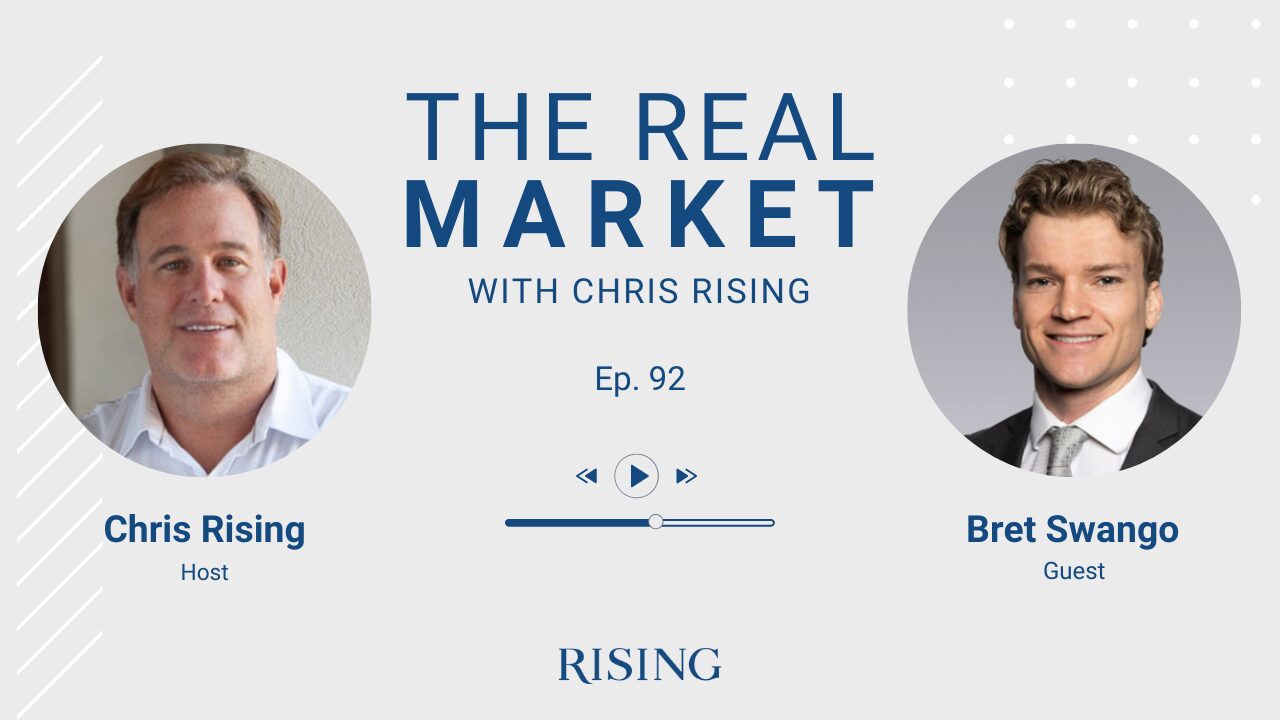
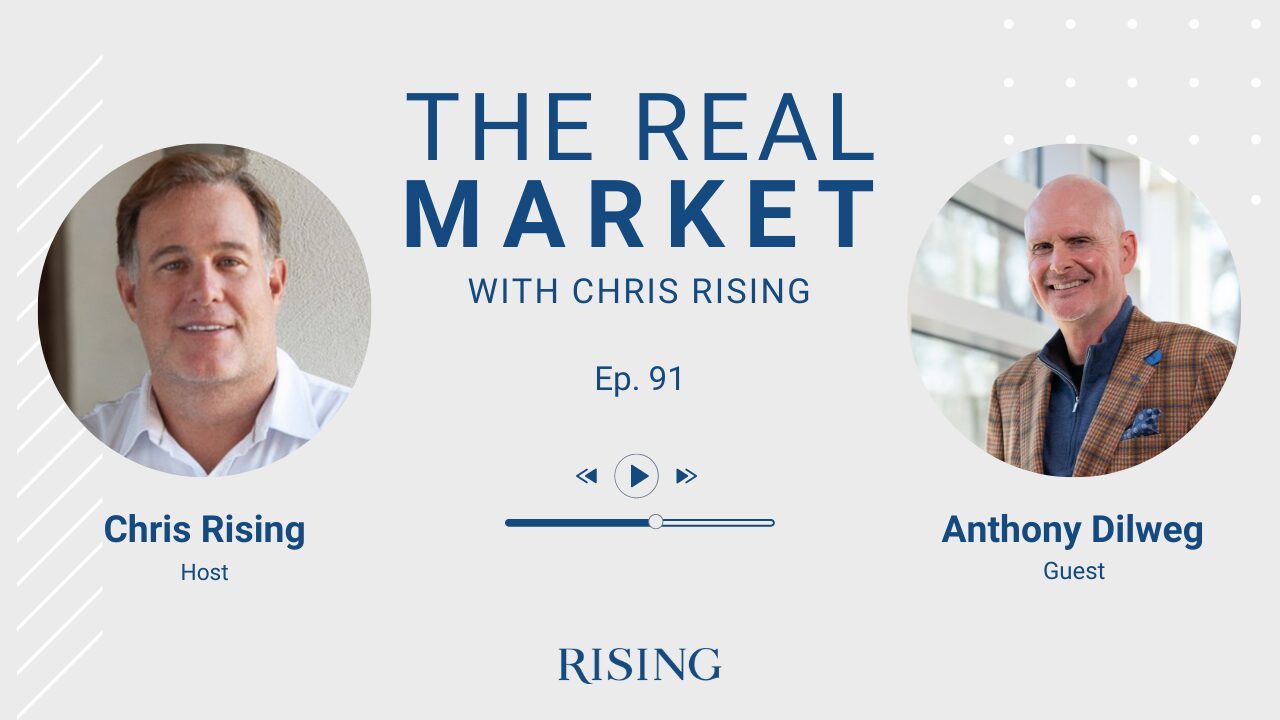
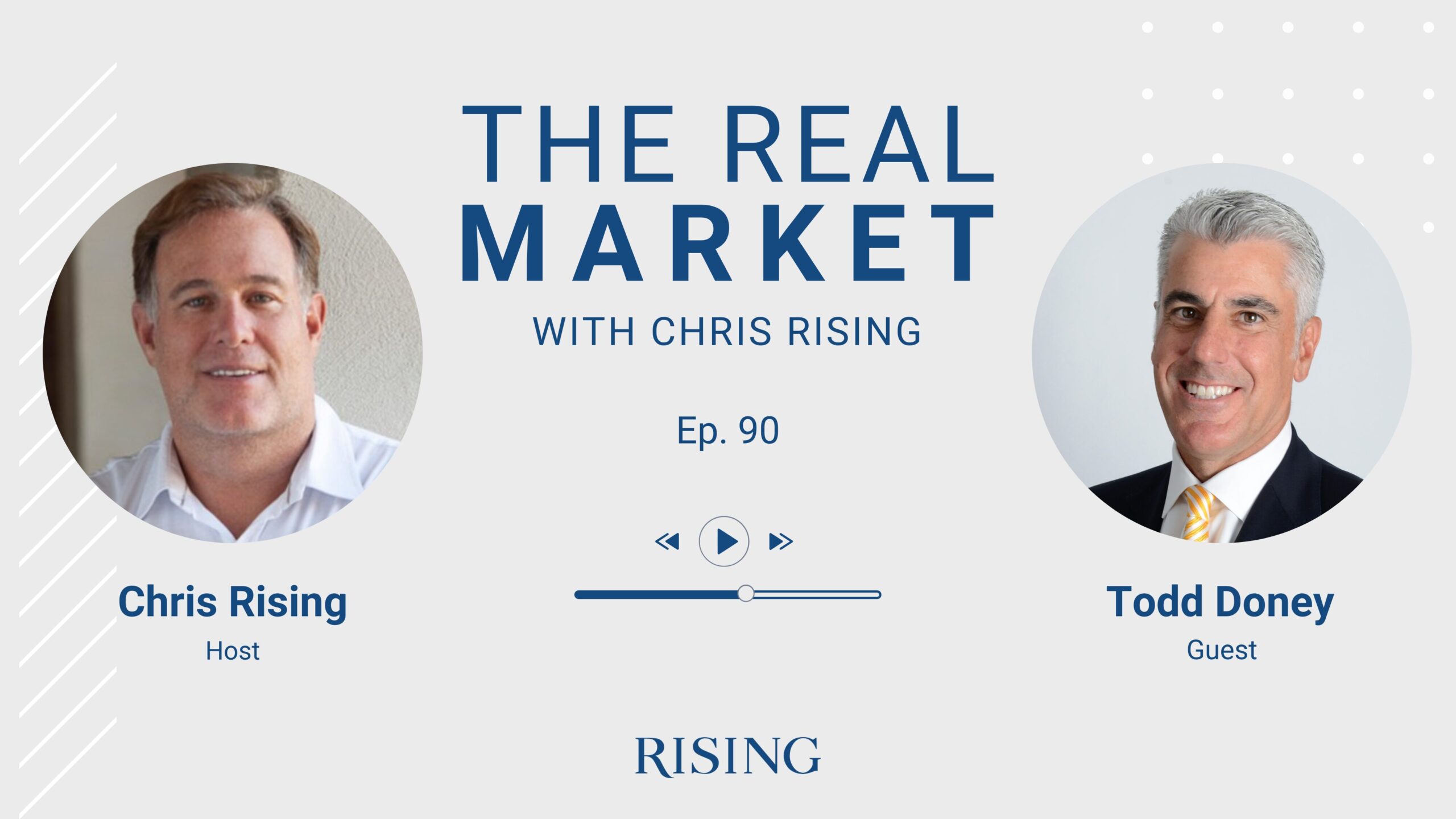
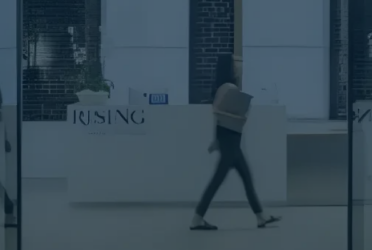
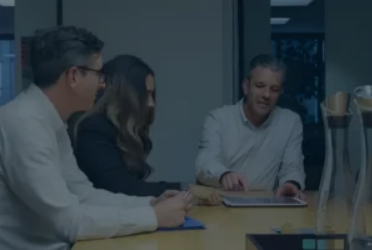
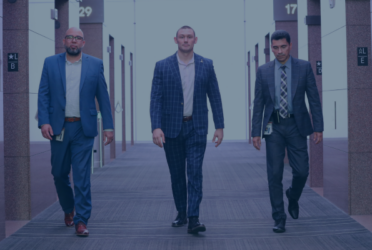
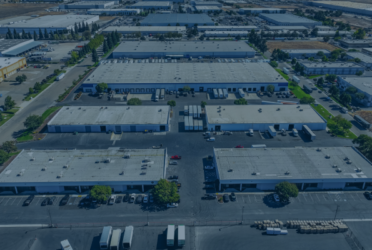
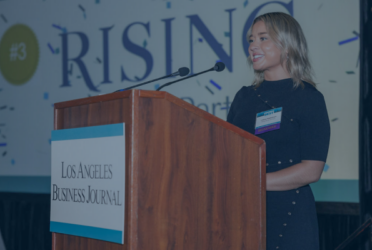
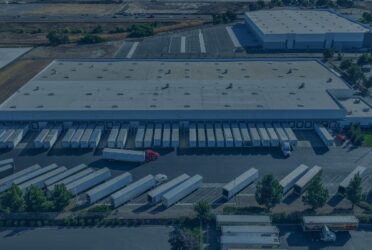
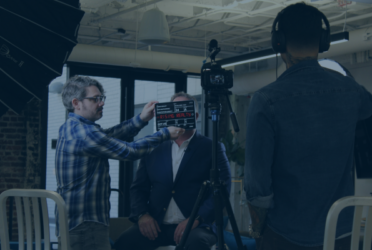
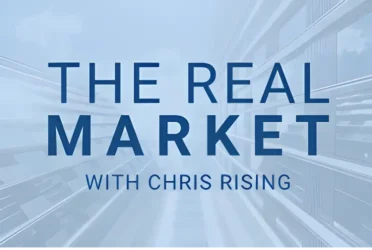 Podcast
Podcast